Our clinic will be closed from December 25th to January 1st, 2024. During this period, we will not be available for regular calls or to schedule appointments. Our emergency line remains open for urgent cases. Wishing you a happy holiday season and a healthy New Year!
TransPRK
Before treatment
- If you wear soft contact lenses, you should remove them at least 14 days prior to treatment.
If you wear hard (oxygen-permeable) contact lenses, you should remove them at least four weeks prior to treatment.
Night lenses should be removed at least 6 weeks before treatment.
We recommend the use of omega 3-6-9 (fish) oil. This product provides better tear film stability.
Your eyes should not be made up during the treatment. Small make-up particles can end up in the operating area and cause inflammation. We advise you to stop wearing make-up the day before the treatment and to thoroughly clean the eyelid margins.
You can have your eyelashes dyed or have fake eyelashes placed, but there must be at least one week and preferably two weeks between the painting/placement and the treatment.
Come to the treatment rested.
Do not use perfume, aftershave and/or day cream on the day of treatment.
Wear comfortable clothing during the treatment. Avoid wool and clothing with a lot of loose fibers, as these can contaminate the surgical area. The operating room has a constant temperature of 18 degrees, so keep this in mind when choosing your clothing.
Bring your sunglasses and cap. You may be extra sensitive to light after the treatment. Sunglasses also protect your eyes from UVA and UVB rays. The photosensitivity can be quite intense for the first few days. Wear the sunglasses according to your own needs (also indoors if necessary).
You will not be able to go home independently after the treatment. You must bring an accompanying person.
You must carefully read the informed consent (the treatment agreement). On the day of the treatment you will be asked to sign an informed consent.
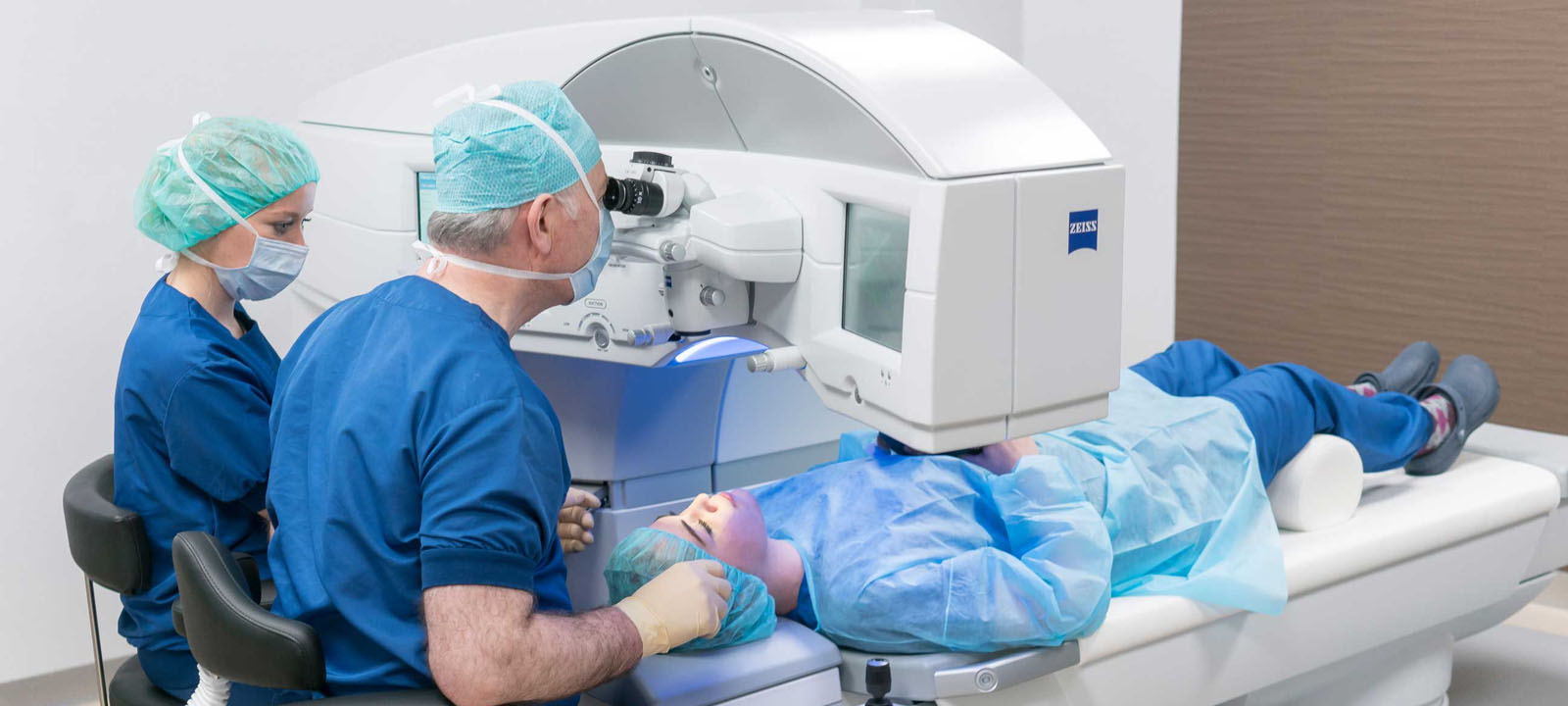
Visus eye clinic does not provide a sedative as standard. If you still want this, you can ask for it.
Step 1
The ophthalmologist or assistant instills anesthetic eye drops into the eye to make it numb. Then he disinfects the eye. An eyelid spreader ensures that the eye to be treated remains open. You will be given a sterile cloth over the face. You may not touch this.
Step 2
The ophthalmologist then checks the laser settings again and points you to the fixation light to look for. The eye tracker keeps a close eye on the eye and follows every movement your eye makes. If this movement is too great, the laser will stop.
Step 3
The computer-controlled excimer laser first removes your epithelial layer in a short time. A tiny amount of corneal tissue will then be removed to “grind” your cornea into the desired shape. If you have opted for a treatment with wavefront software, the optimization of the shape of the cornea will be performed here. As a result, the treatment takes 1 to a few seconds longer. Some people smell an odor of burnt hair during the treatment.
Step 4
When the laser treatment is complete, the ophthalmologist rinses the cornea. He applies a bandage lens (a soft contact lens, no prescription) to the cornea for protection. The underlying epithelium heals within three to four days.
Step 5
After the laser treatment, you will go to a room where you can relax. There you will receive the medication you need after the treatment. You will also receive an explanation of how to use this medication.
Step 6
After the explanation you can go home. Three or four days later you will come back for the first check-up.
During this check-up, the ophthalmologist or optometrist removes the bandage lens and checks how your eyes have recovered.
How long does the TransPRK treatment take?
The actual treatment takes about 15 minutes. In total you will be present in the clinic for approximately 2 – 3 hours. Because Visus Oogkliniek works with the most advanced equipment, it reserves the right to reschedule an appointment for a treatment until the last minute if the equipment does not meet our very high quality requirements.
After treatment
Most people have eye problems for the first 2-3 days. This can manifest itself very differently. The most common complaints are:
Tearing eyes
Burning sensation in the eyes
Having the idea that there is something in the eye
Pain
swollen eyelids
This makes it very difficult to open the eyes. These are normal phenomena. It is recommended that you stay at home and sit in a dark room. You can take an analgesic such as paracetamol (with or without caffeine) or ibuprofen according to your own needs.
What you see in the first few days (even with the bandage lenses in) is not indicative of the result of the treatment. You may see less on the second/third day. This is part of the recovery process.
We recommend the following for sports:
We advise not to perform the following sports/activities for the first 2 weeks:
Team sports such as football, handball etc
Swimming in both salt and chlorinated water
Sauna and solarium
Tennis and squash
We advise not to perform the following sports/activities for the first 1 week
Your body/eye needs time to recover. With all types of training, take it a little slower than usual.
For specific sports or in case of doubt, you can consult the doctor or clinic on 0800 0088.
The speed of recovery varies from person to person. What you see in the first few days is not indicative of the result of the treatment. Visibility is generally good within a day, but can be variable in the first few weeks. Most people go back to work after 2 days. The final result will be achieved after 4-6 months.
We often see a slight overreaction immediately after the treatment due to swelling of the treated surface. With an initial minus strength (-), this means that you will temporarily end up in the plus (+): this can make reading a bit more difficult for a while.
With an initial plus strength (+) you can temporarily end up in the minus (–): because of this the distance will not be very sharp right away.
In the first few months after the treatment it is common that you notice light scattering (glare or halo mainly in twilight/dark) and that the eye feels dry. These side effects will usually disappear on their own.
You may also be more sensitive to light and your strength may not have stabilized yet.
During the first 6 months after the treatment, the vision can be experienced differently with a lot of computer use and/or a lot of driving. You can then drip extra artificial tears.
In a very small percentage of people (<2%) the strength does not come out as discussed and hoped. Visus Oogkliniek will discuss with you what the options are for a retreatment in the event of a proven stable eye test. As a rule, a retreatment will not be performed within the first year of the initial treatment.
Resignation letter general practitioner
On the day of treatment you will receive a discharge letter for your GP. You should give this letter to your GP. At the last check-up, a final report will be drawn up for you and your GP.
Aftercare
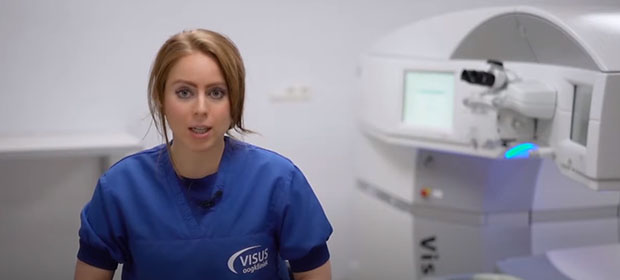
To make laser eye treatments accessible to a wider public, many health insurers reimburse part of the costs of your treatment from the supplementary insurance. In exceptional cases, you may qualify for a medical indication and your treatment will be paid for under the basic insurance. During our extensive preliminary investigation, we can determine whether you qualify for this.
Which medication should you use and when?
After laser eye surgery, use drops to speed up corneal recovery. You will receive a number of medicines from us. These medicines are prescribed by the ophthalmologist and declared to your health insurer by the home pharmacy of the clinic. Any personal contribution and costs for this are at the expense of the patient. For a repeat prescription, please visit our website: www.visusoogkliniek.nl. Below is an overview of the medication to be used after laser eye surgery. You only use this medication for the treated eye(s)(s).
If your doctor deviates from the standard medication described on this page, follow your doctor's advice and ignore this page.
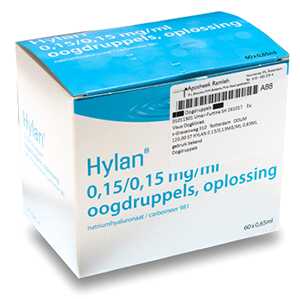
Hylan (kunsttraan)
The Hylan drops are eye moisturizing drops without preservatives. These serve to moisten the eye and prevent dehydration, the Hylan drops will also improve the comfort level of your eyes. In the first four days after the treatment, we advise you to administer these drops every 15 minutes while you are awake. After your first follow-up check-up, we recommend that you reduce these drops to one drop per eye approximately every hour until approximately six weeks after the treatment.
In addition to the desired effect, Hylan can cause side effects. This is the case in about ten percent of people. The main side effects are a slight burning sensation and blurred vision during and just after instillation. This should be over in a few minutes.
In order for the drops to take effect properly, you must wait at least five minutes between dripping the different drops.
Many people like to keep Hylan in the fridge, the cold drop gives a cooling effect.
We advise you to regularly take a screen break behind the computer and to make sure to blink your eyes regularly and, of course, to drip the artificial tears well during the first 3 months.
Recommendation: Use Omega 3,6,9 capsules based on fish oil until at least 6 months after treatment.
- Until day 7 after treatment One drop in each eye at least every half hour.
- Until day 14 after treatment One drop in each eye every hour.
- Up to 3 months after treatment 6 to 12 times a day, depending on your need.
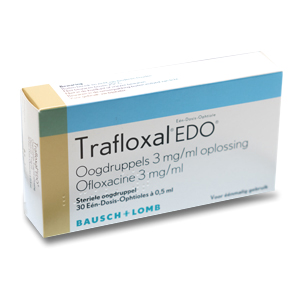
Trafloxal
The Trafloxal (active ingredient ofloxacin) is an antibacterial eye drop that is used after the TransPRK treatment to prevent an eye infection. This antibacterial drop is used in the first four days immediately after the treatment, one drop in each eye per drop moment. During the first follow-up check you will be advised whether you can stop this. Try to spread the Trafloxal eye drops sufficiently throughout the day while you are awake.
- Until the first check (3-4 days) 4 x 1 drop per eye/per day
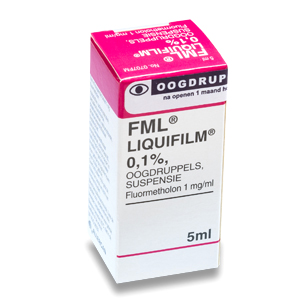
FML (ontstekingsremmer)
The FML Liquifilm is an anti-inflammatory eye drop that is used three times a day immediately after the treatment. You will receive two jars of this, both jars must be used completely, one drop in each eye three times a day at each time of administration.
- Until the first check (3-4 days) Do not use
- After the first checkup (if the bandage lens is removed, usually after 3 or 4 days) 3 x 1 drop per eye / per day until both bottles (for 2 eyes) are empty.
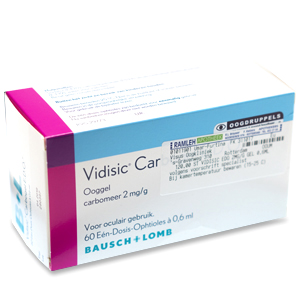
Vidisic E.D.O (kunsttraan)
The Vidisic Carbogel can be compared to the Hylan eye drops. The Vidisic Carbogel also serves as an eye moisturizing agent without preservatives. The substance of this drop is slightly thicker, so after using these drops the vision may be a bit blurry for a few minutes. If you do not try to use the Vidisic Carbogel when, for example, you will immediately actively participate in traffic, take a few minutes to allow these drops to be absorbed by your eyes. After the first check-up, you will be advised to use these drops twelve times a day for three days. After this period, you may continue to use these drops three times a day until the next follow-up (+/- two weeks).
- 1-2 days after first check 1 x 1 drop per eye/per hour
- Then at least 2 weeks 3 x 1 drop per eye/per day (may be more often)
Advice: Use vitamin E and Omega 3,6,9 oil up to 6 months after the treatment.
General information about the artificial tears: During the first 3 months it is better to drop too much than once too little.
In addition to the desired effect, artificial tears can also have side effects. This is the case in about ten percent of people. The main side effects are a slight burning sensation and blurred vision during and just after instillation. This should be over in a few minutes.
In order for the drops to take effect properly, you must wait at least five minutes between dripping the different drops.
Tip: Bring your medication with you to your first contact lens removal appointment. Then we will explain it to you again.
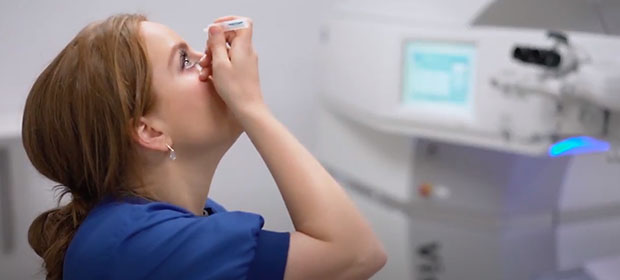
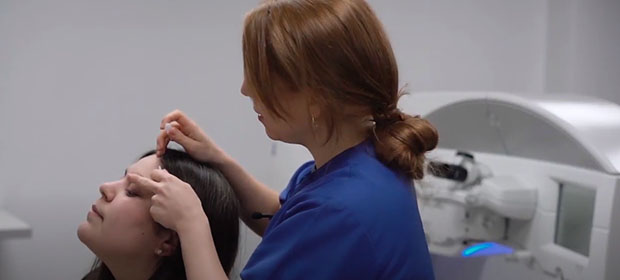
Follow the following steps:
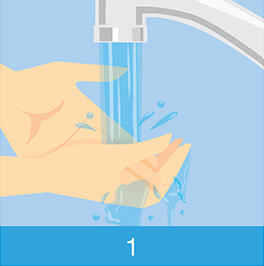
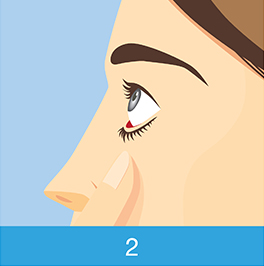
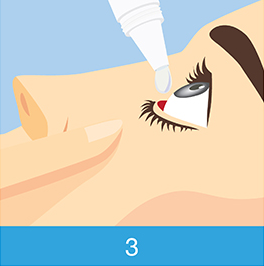
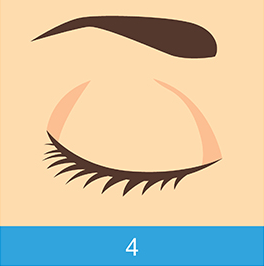
- Wash your hands with soap and dry them well with a clean towel or paper.
Sit down and take the bottle of eye drops in your writing hand.
With the tips of your fingers on your other hand, pull down the lower eyelid to create a trough.
Tilt your head back and look up (towards your eyebrow). If you cannot bend your head back properly, lie down.
Place your hand with the bottle on top of the hand that makes the gutter. Place the bottle above your eye. Avoid contact of the bottle with the eye, eyelids and eyelashes.
Squeeze the bottle and let one drop fall into the gutter.
Close your eye (don’t squeeze). You can sit up straight again.
Then press your tear duct closed for 1 minute, by pressing gently just below the small hard bump in the inner corner of your eye (on the side of your nose). This ensures that as little of the eye drop as possible ends up in your nose and pharynx.
Wash your hands with soap and dry them with a clean towel or paper
Een verkeerd antwoord gegeven?
Geen probleem. Je kunt ten alle tijden de test opnieuw doen om een nieuwe calculatie te starten.

